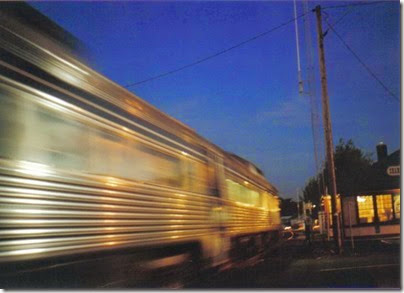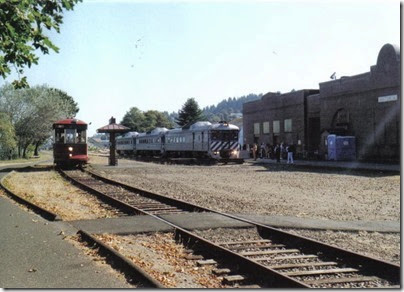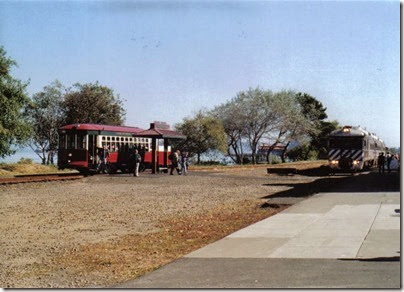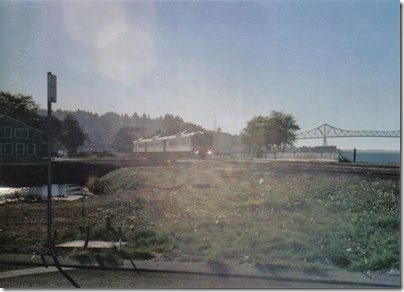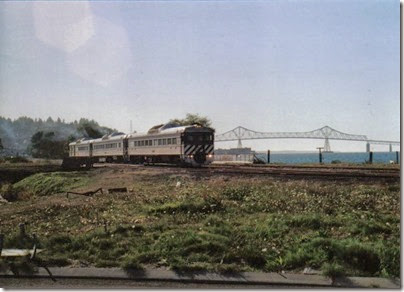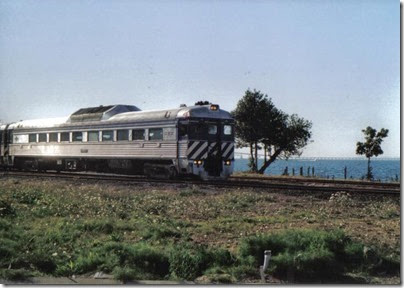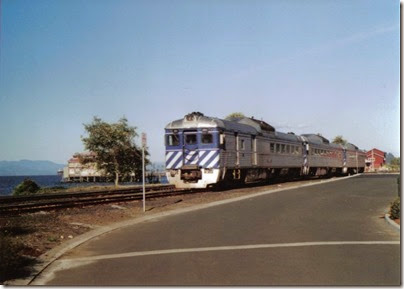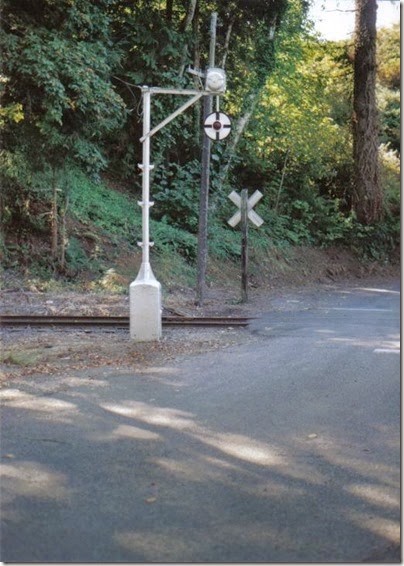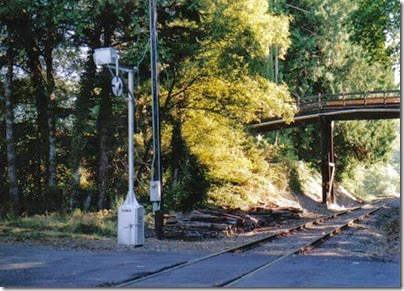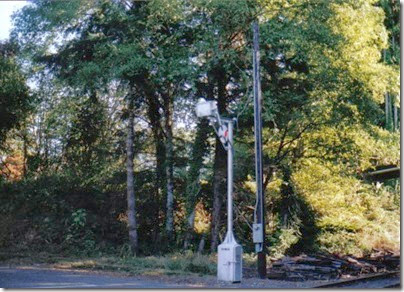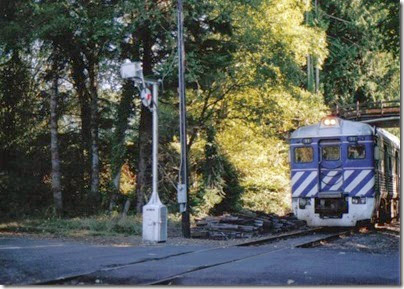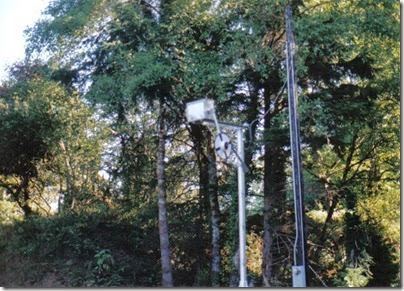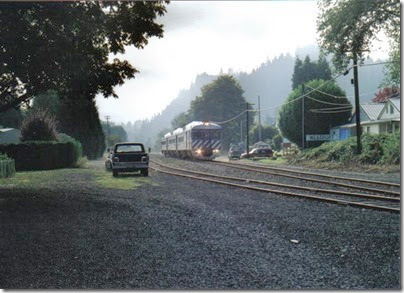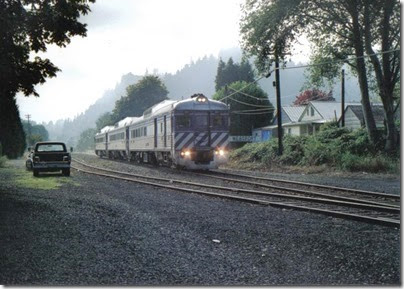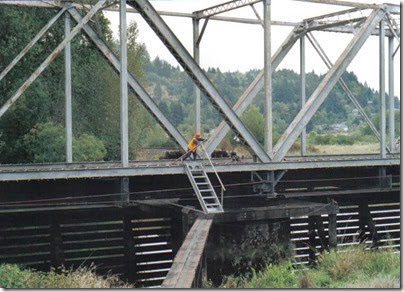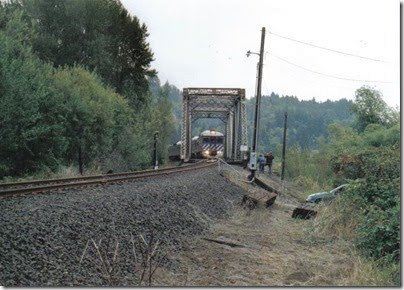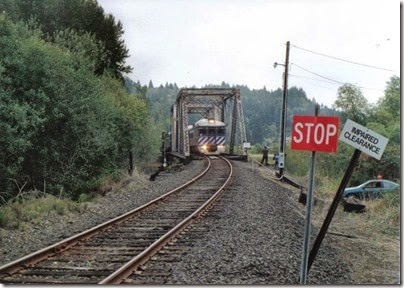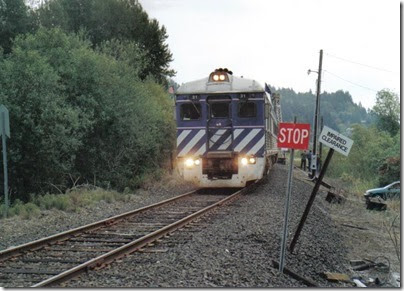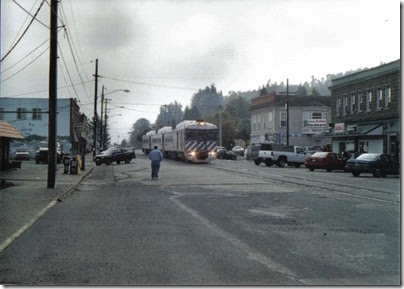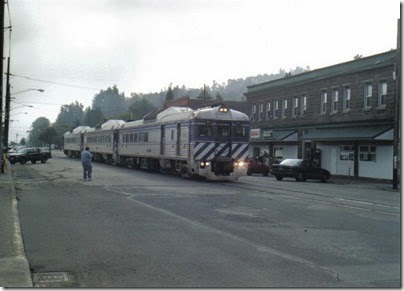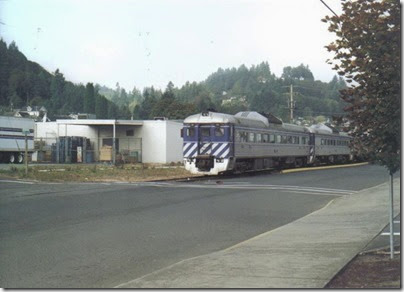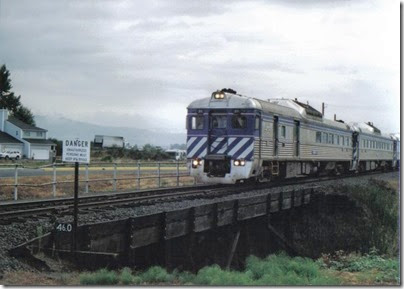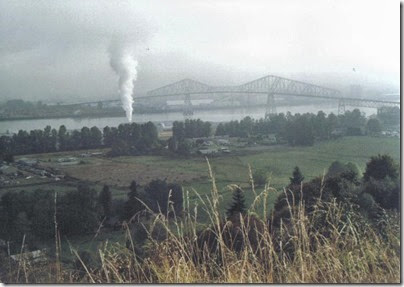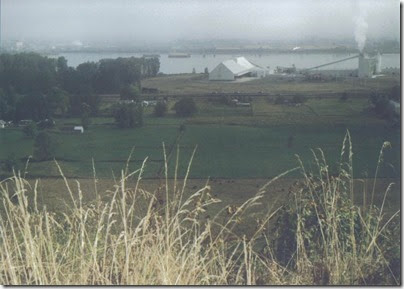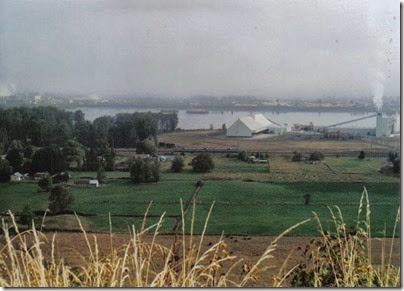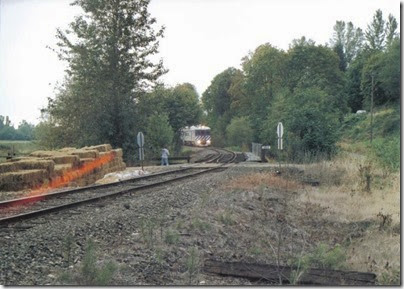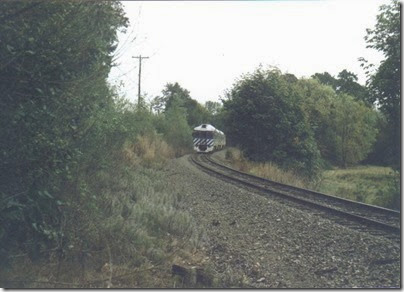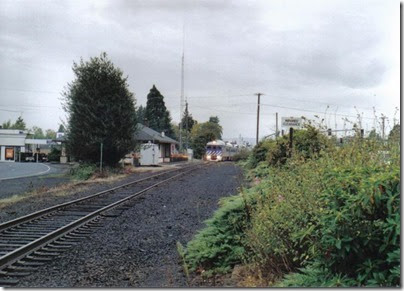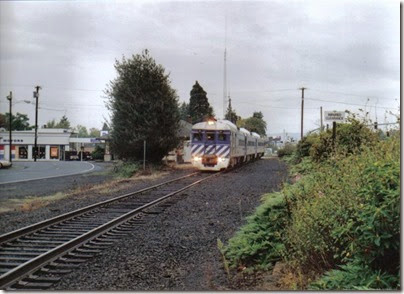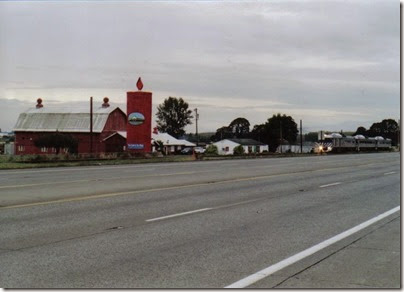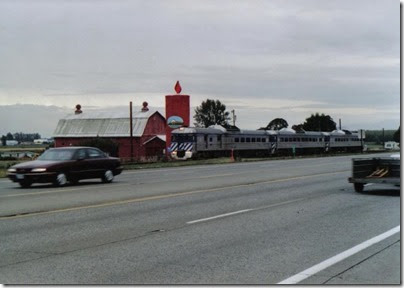…Continued from Tide Creek.

In August 1852, a trapper from Ohio named Daniel Blue Goble took a donation land claim along the Oregon side of the Columbia River. He later sold the land to George Foster, who laid out a town on the site which he called Goble after the original owner. Today, despite its location on Highway 30 and the Columbia River, Goble is an unincorporated, unremarkable locale consisting almost entirely of a small marina and the Goble Tavern. There hasn't even been a Goble post office since 1923. But over a century ago, Goble was not only an important railroad junction, it was the reason the railroad was there at all.
The Northern Pacific Railway had built a transcontinental railroad across the northern United States, with its western terminus in Seattle. Wanting to build a connection to Portland, the Northern Pacific had built south from Seattle, reaching Kalama, Washington by 1874. Passengers then had to be transferred to steamboat to reach Portland. In order to try to close the gap, Northern Pacific built north from Portland along the Columbia River to Goble, directly across from Kalama, arriving in 1883. This allowed trains to cross the river, initially aboard a barge and beginning in 1884 aboard the steam ferry Tacoma, and continue on their way. The Tacoma, initially called the Kalama, was the world's second-largest ferry at the time at 338 feet in length. It was built in Delaware, disassembled and shipped in 57,159 pieces from New York around Cape Horn to Portland aboard the Tillie E. Starbuck, reassembled in Portland and launched by Smith Brothers & Watson on May 17, 1883. The ferry entered service on October 9, 1884 under the command of Captain George Gore, carrying entire trains, including locomotives, across the Columbia River between Kalama and Goble. This arrangement continued until 1908, when the Northern Pacific completed a route on the Washington side of the river, including a drawbridge between Vancouver, Washington and Portland, Oregon, where the river was narrower. That drawbridge is still in use today.
Historical Information & Photos
Steam Ferry Tacoma at Kalama in 1885 from the Washington State Historical Society
Kalama waterfront & ferry landing, circa 1890, from the Washington State Historical Society
Steam Ferry Tacoma, from Washington's Secretary of State's Cowlitz County History Page
Meanwhile, the people of Astoria wanted a rail connection to the rest of the country. In 1895, the Astoria & Columbia River Railroad was incorporated to build a railroad connecting Astoria to the Northern Pacific at Goble. This new railroad was completed on April 4, 1898, and the first train from Portland to Astoria ran on May 16. James J. Hill, founder of the Great Northern Railway, and also part owner of the Northern Pacific and Spokane, Portland & Seattle Railways, purchased the Astoria & Columbia River Railroad in 1907. In 1911, the entire line from Portland to Astoria was transferred to the Spokane, Portland & Seattle Railway. By that time, the new Northern Pacific line on the Washington side of the river was the main mine, and the original line to Goble was regulated to local trains.
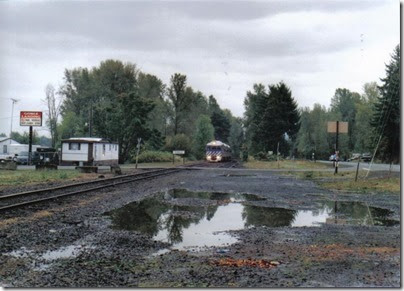
The Lewis & Clark Explorer at Goble, Oregon on October 1, 2005.
Today, there is almost no indication of Goble's importance to the railroad, though from the river, the remains of the old railroad ferry slip can still be seen. But, knowing its history, i just had to include it.
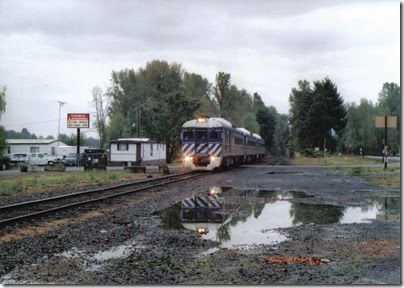
The Lewis & Clark Explorer at Goble, Oregon on October 1, 2005.
Continue to Rainier…
